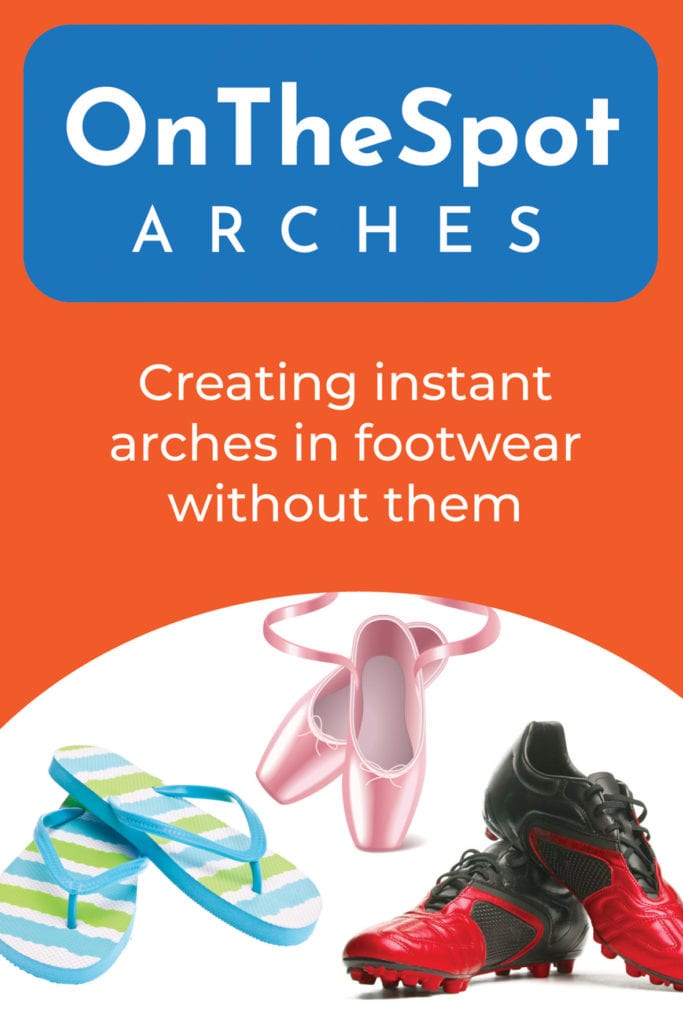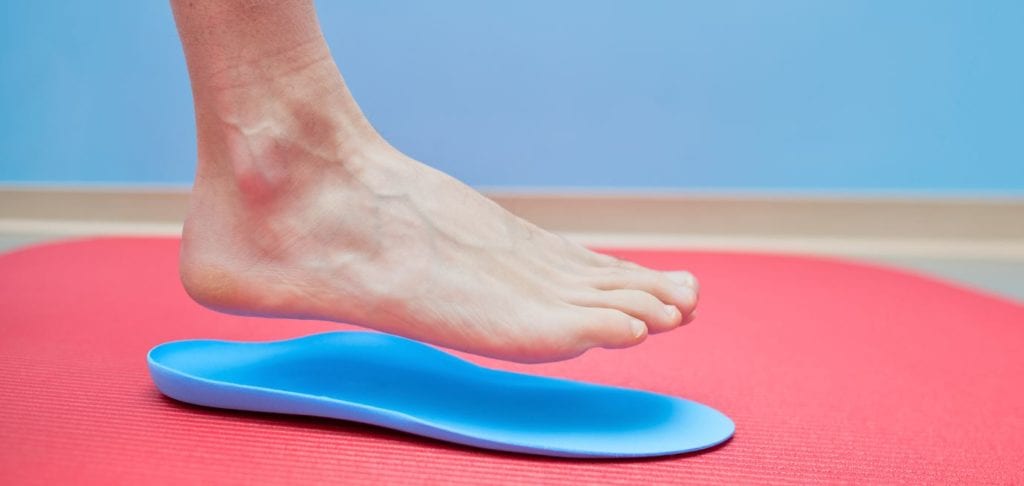Press Release:
New Arize Custom Orthoses to Help Podiatrists Relieve Foot Pain for Millions
Arize Orthotic Solution enables podiatrists and orthotists to prescribe custom orthoses tailored to their patients’ specific needs in less than five minutes
July 29, 2021
News Highlights:
Disrupting an industry and improving patient wellness: 77% of Americans experience foot pain.
The Arize Orthotic Solution enables access to accurate, high-quality and custom orthoses helping create lasting and dependable products for podiatrists and their patients.
Simple, easy-to-use solution leveraging HP 3D printing and cloud-based software provides clinics with efficiencies at every step and helps podiatrists improve patient outcomes
PALO ALTO, Calif., July 29, 2021 — HP Inc. today announced the Arize Orthotic Solution, a new end-to-end digital orthotic solution for podiatrists and orthotists. Currently, 77% of Americans experience foot pain and the fast, easy-to-use digital solution upends traditional manufacturing methods and delivers quality custom orthoses and consistent results, every time[ii]. Using a blend of advanced 3D printing and cloud-based software, Arize enhances the development and delivery of custom-fit prescriptive orthoses and streamlines business operations to take foot health into the next generation. Podiatrists and orthotists can capture 3D renderings of a patient’s foot, fine-tune and prescribe personalized orthoses for their patients – all in less than five minutes[iii].
Arize disrupts the status quo with a new kind of efficiency and optimizes customization capabilities not possible through traditional processes[iv]. For example, Arize can automatically detect anatomical landmarks found in the 3D printed foot scan, so that providers can approve or modify as needed. Providers can also adjust details to enhance form, fit, and function, with thin, light, and low-profile orthoses enabled by 3D printing, improving patient satisfaction. Starting with five familiar styles – functional, sports, stability, everyday comfort, and dress/low profile – providers can leverage the design flexibility enabled by 3D printing to tailor the orthoses based on patient need and activity level.
“The Arize Orthotic Solution has increased my clinic’s productivity and has allowed me to be more efficient due to the ease of use and streamlined workflow,” said Dr. Gavin P. Ripp of Premier Podiatry & Orthopedics. “I’ve been using Arize in my practice for the past six months and my patients are excited about the innovative, lightweight, and low-profile 3D printed custom orthoses. Plus, with Arize, I can easily place reorders and I receive consistent fitting orthoses every time.”
Enhancing Process, Driving Efficiency, Empowering Clinicians
The Arize cloud-based architecture streamlines clinic operations and efficiencies, providing access for the clinic’s full staff to all current patients and their prescription status. For example, an office administrator can start a patient intake while scheduling an appointment. Clinicians and technicians can then conduct the 3D scan and make customizations, leaving final prescription submission for podiatrists and orthotists to review. With greater flexibility to tap into the patient profile from virtually anywhere, Arize brings collaboration back into the practice, meaning more fluid operations and less time navigating roadblocks.
“With its Arize Orthotic Solution, HP has married a highly accurate 3D scanning solution, with an intuitive and elegant clinic interface and custom 3D printed designs that are likely to change the orthotics industry for the foreseeable future,” said Dr. Jack Reingold of Coast Podiatry Group of Solana Beach Inc.
3D Printing Helping Podiatrists Improve Patient Outcomes
This new solution is a testament to the digital revolution – taking advantage of HP’s industry-leading Multi Jet Fusion 3D printing technology to help podiatrists deliver individually customized products. For podiatrists and specialty clinics challenged by highly variable, manual processes, Arize leverages proprietary HP innovations in digital software and data intelligence to provide a solution with highly accurate, repeatable, and consistent digital workflows.
“I’m confident the new Arize solution and HP’s future technology roadmap will transform the podiatry market and most importantly improve patient outcomes,” said Dr. Bruce Williams, President, Breakthrough Sports Performance, and consultant to HP. “Arize enables innovative orthotic design and unmatched efficiency for clinics looking to provide the highest quality custom foot orthoses.”
3D printing is a key enabler to help clinics in the shift toward a more circular, sustainable, and inclusive economy. Orthoses produced with HP’s Multi Jet Fusion technology can be made to optimize materials use while delivering fine detail combined with strength. 3D printing also brings production closer to the point of consumption, which simplifies supply chains and drives reductions in carbon emissions and waste[v].
“At HP, we are committed to accelerating entirely new market opportunities and driving the sustainable manufacturing of personalized products across industries,” said Philipp Jung, GM of Arize and Global Head of Orthotic Solutions, HP Inc. “With our end-to-end digital expertise and 3D printing capabilities, we are bringing a new way of working to the prescriptive orthotics business, one that streamlines the way providers serve patients, conduct business, and operate. From innovative design capabilities to cost savings and improved time management, Arize enables podiatrists to provide a higher level of service and better patient outcomes.”
HP has worked closely with an independent Advisory Council consisting of leading industry experts to develop the Arize solution and to design a long-term roadmap to ensure ongoing advancements to help clinicians achieve better patient outcomes. Members of the Advisory Council include Paul Langer, Vice President of Operations for Langer Biomechanics; Sally Crawford, Director of Technology & Data Management at Resilience Code, LLC; Dr. Jay Segel of Segel Podiatry; Dr. Jason Surratt of Northwest Extremity Specialists; and Dalia Zwick PT, Ph.D. a rehab clinical supervisor.
Learn More About the Breakthrough Arize Orthotic Solution
The new Arize Orthotic Solution will be on display in Booth 811/910 at the American Podiatric Medical Association (APMA) Annual Scientific Meeting (The National) in Denver, July 29 to August 1, 2021. The must-attend meeting for podiatrists offers attendees a diverse educational program touching on all aspects of foot and ankle surgery and medicine.
The Arize team will be joined by Dr. Jay Segel on Saturday, July 31 at 9:45 am at the Innovation Café as they present ‘Introducing Arize: an innovative 3D printing orthotic solution.’ Led by Melanie Shelton, Arize Product Manager, see how fast and easy the solution is, and how it can help podiatrists improve business results by improving workflow and providing repeatability with consistent results.
About the Arize Orthotic Solution
Developed in collaboration with podiatrists and leading industry experts, Arize is a new digital solution that helps podiatrists create custom foot orthoses tailored to the patient, quickly, easily, accurately, and reliably. The Arize Orthotic Solution leverages HP 3D Printing technology and aims to further HP’s mission to create technology that makes life better for everyone, everywhere. More information on the Arize Orthotic Solution can be found at ArizeClinical.com.
Footnotes:
American Podiatric Medical Association (APMA), 2014
[ii] Based on internal HP testing, March 2021, that generated multiple orders with the same prescription and matched the hash values for each file from each order for a visual comparison.
[iii] Based on internal HP testing, March 2021. Actual results depend on many factors including patient-doctor interactions and specific patient conditions.
[iv] Compared to traditional manual processes, 3D printing is a digital technology that creates objects by selective addition of material (additive manufacturing). This allows each 3D-printed part to be unique in the same way that each page printed by an inkjet or laser printer can have unique content. 100% customized custom content page-to-page and part-to-part is a capability digital technologies bring to 2D and 3D printing. To learn more, see hp.com/go/MJFWhitepaper.
[v] hp.com/go/sustainableimpactreport2019


